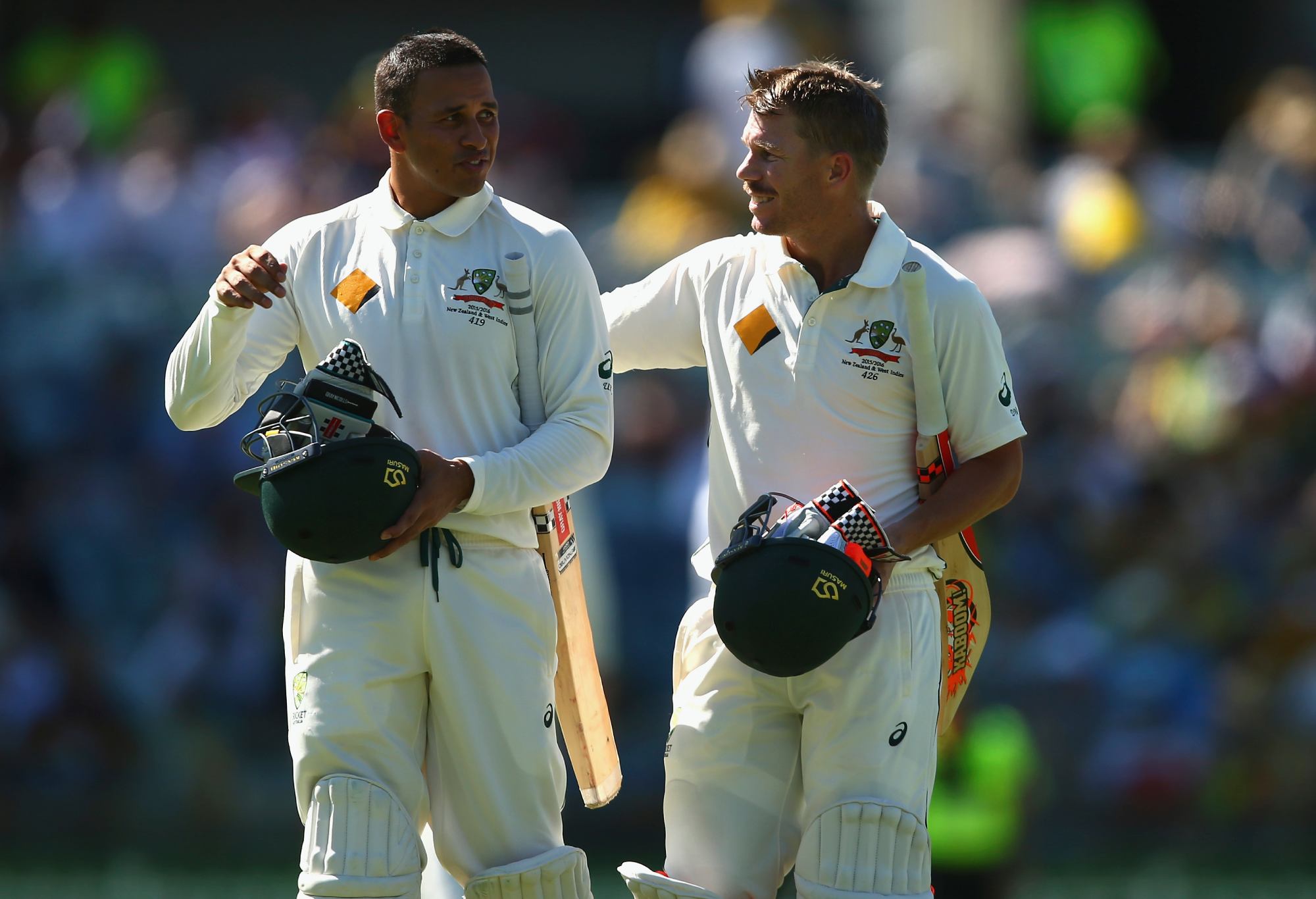David Warner has finished his storied career; his career average of a tick under 45 puts him in the ‘good to very good’ category – but it is his strike rate of over 70 that leaves a legacy – and a rather significant hole in the current lineup.
Even in his very final test innings, Warner’s ability to apply scoring pressure was on show one last time.
There have been approximately 12,000 different suggestions for who is to replace Warner at the top of the order, however, none of them have anything like his scoring speed.
For the sake of this exercise, let us assume that the pathway has been cleared for the return of Cameron Green, via Steve Smith moving up the order. Here are the career strike rates for our current top four:
• Warner – 70.2
• Khawaja – 48.6
• Labuschagne – 52.5
• Smith – 53.5
A basic combination of these comes to a strike rate of 56.1. But if we just look at the past two years each of these players has slowed down, particularly Warner and Smith:
• Warner – 60.7
• Khawaja – 46.4
• Labuschagne – 52.1
• Smith – 48.4
• Combined – 51.4
So if it feels to you like our top-order scoring speed has fallen recently, you are correct: a drop of nearly five runs per 100 balls.
If it feels like Warner’s last two years have tarnished his legacy of performance, you are also correct. But also, Smith has found it significantly more difficult to score freely in recent times. He is facing a similar number of balls, but scoring less runs.
Now, let us remove our dearly departed Warner (or not so dearly, depending on your opinion) and replace him with Cameron Green – who has a test strike rate over the past two years of 48.8 – note his first-class strike rate is 51.8, so a little higher but not that much.
Our combined top-four strike rate now becomes just 48.9, which is under three runs per over. Digging in, rather than dominating, looks like being the order of the day for our next phase.
How does this compare to some of our top four combinations in recent history? Set out below are four groups that played together for a reasonable period of time.
In each case, I have measured their strike rates in all the tests where the opening combination played together; starting with the late 1980s to early 1990s matches involving both Geoff Marsh and Mark Taylor:
• Mark Taylor – 40.5
• Geoff Marsh – 37.0
• David Boon – 39.5
• Alan Border – 39.1
• Combined – 39.0
This combination played over 20 times together. Even allowing for a different era it must have been a hard watch at times.
1990s matches involving both Michael Slater and Mark Taylor:
• Michael Slater – 53.4
• Mark Taylor – 44.4
• David Boon – 41.8
• Mark Waugh – 55.4
• Combined – 48.5
So by including batsmen considered historically to be free-scoring, like Michael Slater and Mark Waugh, this group’s combined strike rate was still a tick lower than our proposed post-Warner top four. Maybe Warner’s relentless speed has raised our expectations these days.
2000’s (matches involving both Matt Hayden and Justin Langer):
• Matt Hayden – 61.3
• Justin Langer – 58.3
• Ricky Ponting – 62.0
• Damien Martyn – 51.0 (note could have used Mark Waugh at 53.8, but less innings)
• Combined – 58.2
Now we are talking; this dominant, domineering top four all scored very quickly by historical standards – especially the top three.

Usman Khawaja and David Warner. (Photo by Ryan Pierse – CA/Cricket Australia via Getty Images/Getty Images)
The combined rate is not only more than nine runs per 100 balls more than what we are likely to see post-Warner, but is well higher than the current combination, even if we include peak speed Warner and Smith, rather than the more recent shadow versions.
This all-time great team scored quickly enough as a combination to negate any Warner effect, plus there was the small matter of Adam Gilchrist (strike rate of 83.6) coming in at seven – we were so spoilt!
2010s matches involving both David Warner and Chris Rogers:
• David Warner – 77.4
• Chris Rogers – 50.6
• Steve Smith – 57.7
• Michael Clarke – 57.8
• Combined – 60.9
Warner played with bespectacled Rogers more than any other opener before Khawaja.
Not a noted fast scorer, Rogers still comfortably has Khawaja covered, plus both Warner and Smith were scoring at supercharged rates compared to their most recent two years.
Michael Clarke rounded out an aggressive combination that had a combined scoring rate higher even than the all-time great group of the 2000s.
By having this combination straight after the great Hayden/Longer/Ponting/Martyn combo of the 2000s, expectations were raised that scoring speeds of 55 to 60 runs per 100 balls were commonplace.
In reality, our more turgid recent efforts from Khawaja, Labuschagne and Smith are not so unusual.
So, do we accept that we are heading into a more sedate era when you can go to the fridge, read a chapter and mow the lawn and still not miss a lot of the action?
Or do we find a Warner 2.0 to try and bring back the heady days of Hayden, Ponting and the rest?
It is plain that none of Green, Bancroft, Renshaw or Harris provide that impetus, so the Australian selectors would have to take a risk on a less credentialed T20 slogger to take up the baton.
But I guess that is what they did back in the day with Warner.
Maybe our next test opener should be a Josh Inglis, Short (no, the other Short) or Josh Philippe?
Or maybe we give the first session to the bowlers and go back to the future to ensure our continued Test Match success.





























































































